15 Amazing National Parks in California To Explore
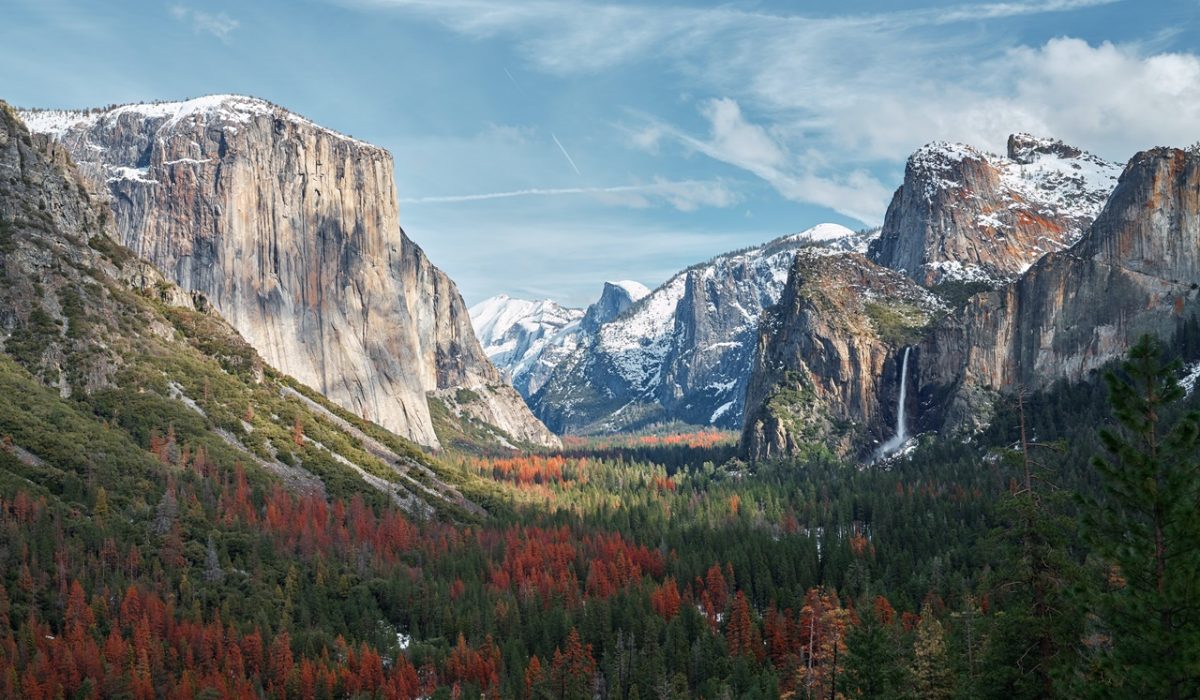
Visiting national parks in California is the best way to discover and appreciate its diverse environment. In addition, it is also home to some of North America’s best natural wonders. Think salt flats, towering redwood trees, sprawling deserts, and islands teeming with flora and fauna. The government protects these parks to preserve their historical, environmental, or scenic importance. Some national parks also serve as a refuge for critically endangered or rare plants and wildlife. Visitors can also enjoy different activities like hiking, biking, camping, going on a road trip, and more. With all that beauty and fun adventures, these national parks are a gem and shouldn’t be missed when visiting the Golden State.
Best National Parks in California
(Take note that all entrance fees are subject to change without prior notice. Additionally, always check the official park website for any updates on entrance fees and park closures.)
1. Yosemite National Park
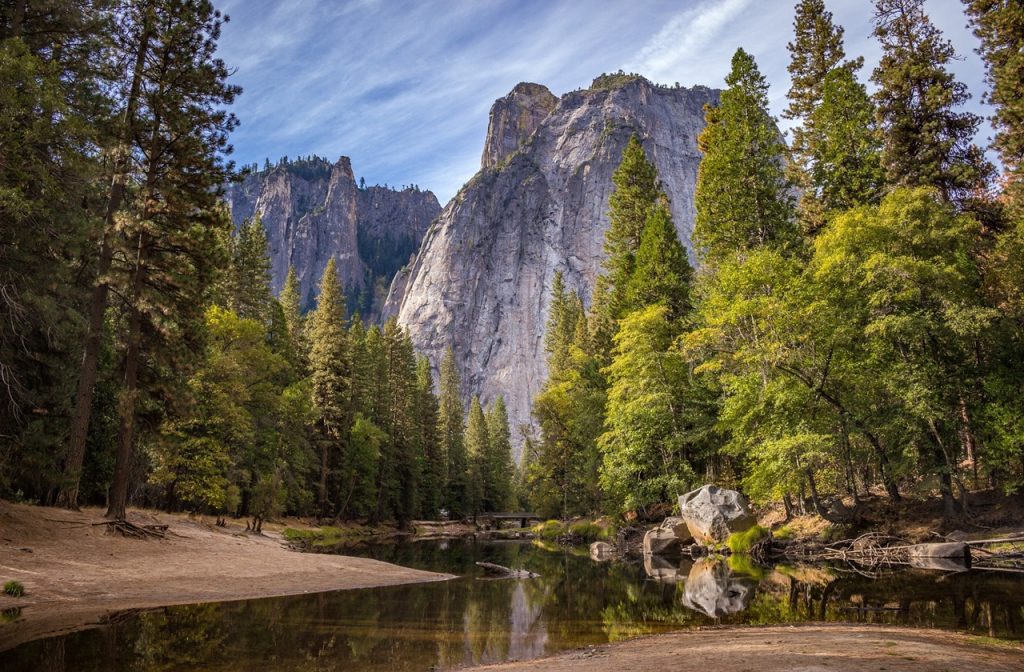
Photo by Free-Photos on Pixabay
When it comes to the best national parks in America, Yosemite National Park needs no introduction. This UNESCO World Heritage Site boasts postcard-worthy landscapes and breathtaking natural sites. The park is famous for its rock formations like El Capitan and Half dome, its sequoia forests, enchanting lakes and waterfalls, and more.
A year-round destination, visitors can enjoy plenty of activities no matter the season. In spring, marvel at the lush greenery and take advantage of the weather for hiking. Summer is the most popular time to visit northern California national parks like Yosemite but is also the most crowded so expect thick crowds on campsites and trails. Autumn is another great time to visit the park as summer crowds have gone and the weather is ideal for outdoor activities like rock climbing, camping, hiking, and seeing sites like Yosemite Falls and the Half Dome. Winter is the slowest season in the park and most trails are closed, but you can still witness the Yosemite Firefall and enjoy ice skating at Yosemite Valley.
Entrance fees: 20 to 35 USD (depending on vehicle type)
2. Redwood National and State Parks
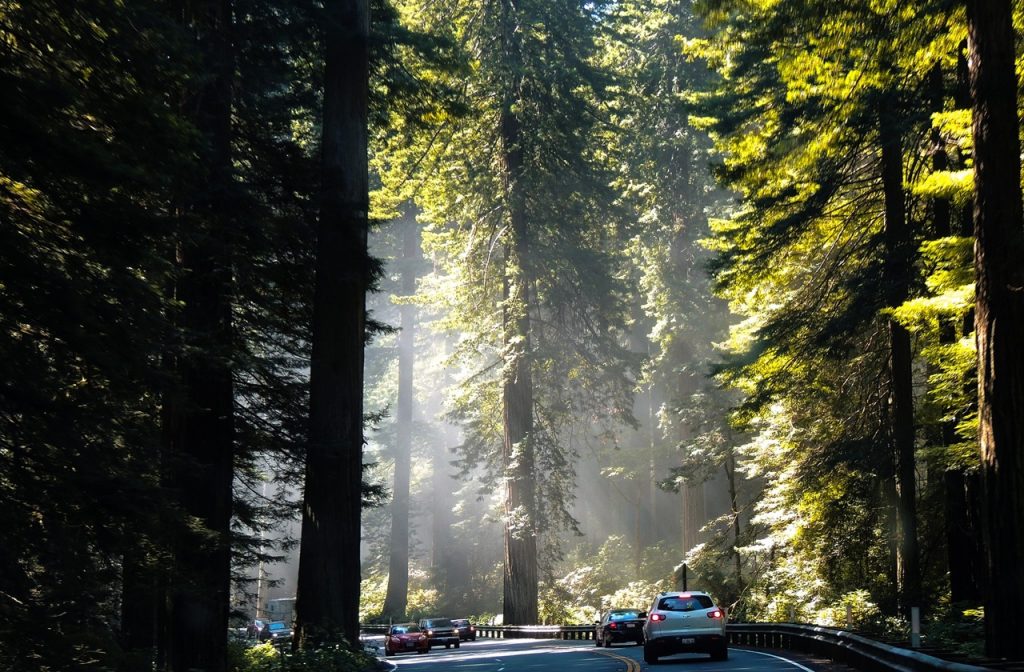
Photo by back_road_ramblers on Pixabay
Along with its beaches, redwood trees are one of California’s trademark natural sites. These redwoods are one of the largest trees in the world and can tower up to 350 feet tall. To see these larger-than-life forests, visit Redwood National Park and its state parks. They are arguably the best place to see the redwoods, offering various trails and spaces where visitors can admire the trees and spend time with nature. There are various hiking trails available with different difficulty levels and even a wheelchair-friendly trail for those with limited mobility. On the other hand, visitors can also enjoy the view of the redwood trees via scenic driving routes.
Redwood National Park is also an important site as it preserves several threatened and endangered species like the northern spotted owl, Chinook salmon, and Steller’s sea lion. In addition, some Native American groups still live in the park. Because of its ecosystem and cultural significance, the park is hailed as a World Heritage Site.
Entrance fees: Free for Redwood National Park, while some state parks require a day-use entrance fee
3. Death Valley National Park
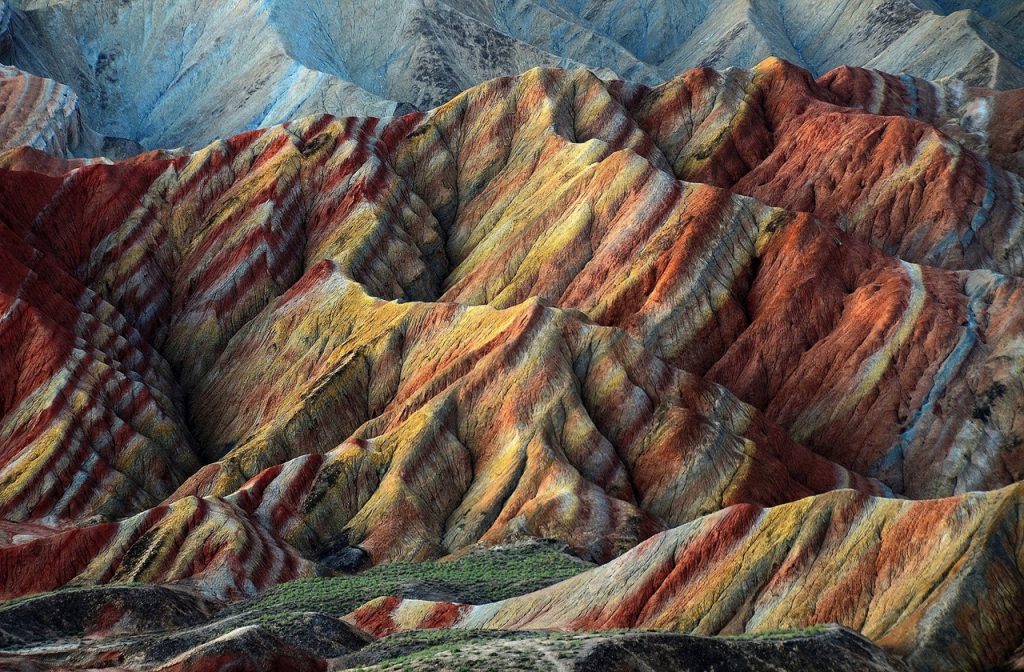
Photo by Free-Photos on Pixabay
Death Valley National Park is one of the national parks in California shared between two states. Located along the California-Nevada border, Death Valley is one of the national parks near Las Vegas and makes up for an ideal road trip from the city. But don’t let its name intimidate you into visiting—it is actually one of the most fascinating places in the country! It features colorful hillsides, dunes, salt flats, and badlands that seem as if you’re on a different planet.
With over 3 million acres of land, there’s so much you can do at Death Valley National Park. Start at the Furnace Creek Visitor Center to get a brief overview of the park and its history. From late February to mid-July, see the wildflowers in bloom along the road and areas with lower elevations. Visit Badwater Basin, a large salt flat, and Zabriskie Point, a unique landscape composed of sediments. On a cloudless night, be in awe of the dazzling night sky and get the chance to see the Milky Way Galaxy at the Mesquite Flat Sand Dunes. Don’t forget your binoculars, telescopes, and cameras to capture the unforgettable scenery!
Entrance fees: 15 to 30 USD (depending on vehicle type)
4. Joshua Tree National Park
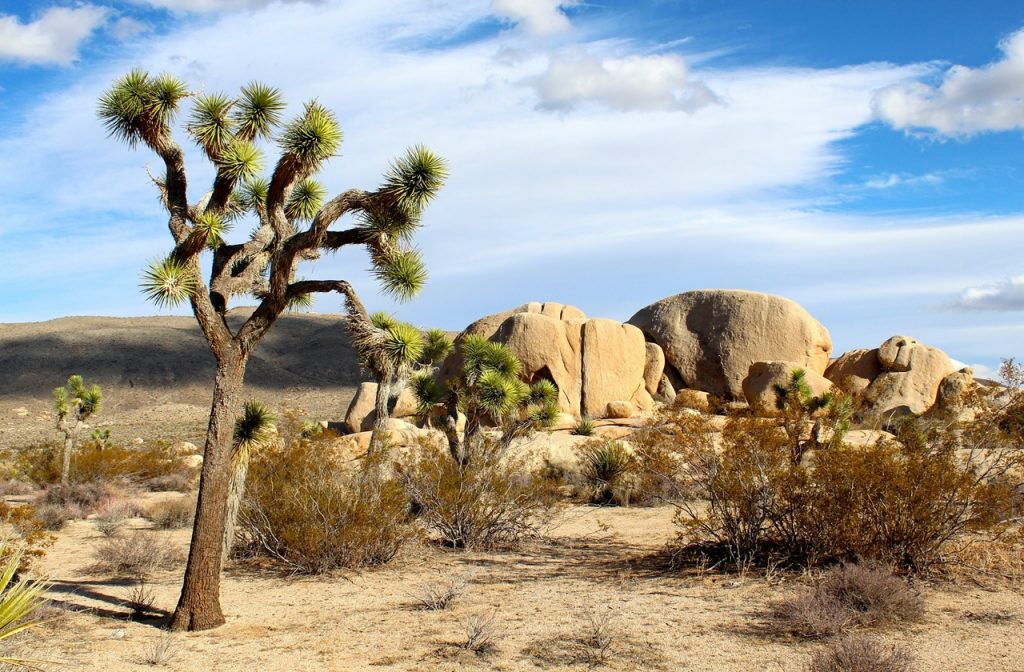
Photo by nightowl on Pixabay
Aptly named after the trees scattered around its landscape, Joshua Tree National Park paints the perfect Californian desert scenery. It is a favorite among boulders and rock climbers due to the number of rock formations spread around its area. In addition, the Southern California national park sits between two desert ecosystems, namely the Mojave Desert and the Colorado Desert.
Like Death Valley National Park, Joshua Tree National Park is also one of the national parks in California perfect for observing the night sky. In fact, it is a designated International Dark Sky Park due to the number of stars and other celestial bodies visible to the unaided human eye. But if stargazing isn’t your cup of tea, there are other activities to enjoy. Go camping, wildlife seeing, birdwatching, and spot different flora and fauna on a nature walk. As one of the best places for rock climbing in the U.S., challenge yourself and try this outdoor sport.
Entrance fees: 15 to 30 USD (depending on vehicle type)
5. Sequoia National Park
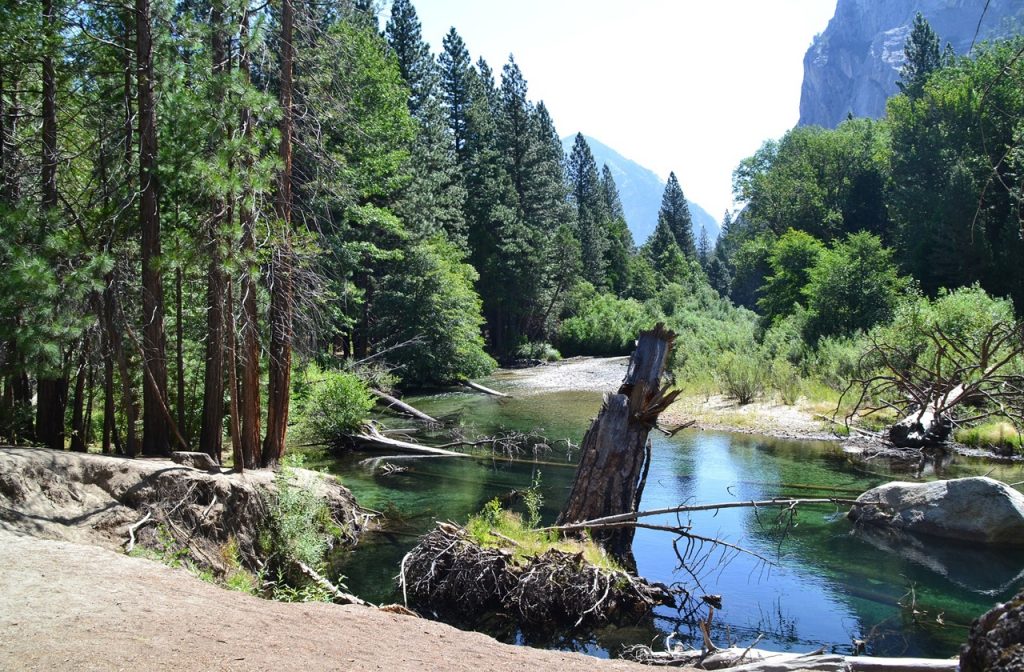
Photo by lehrerhec on Pixabay
Giant sequoia trees are the crowning glory of Sequoia National Park, one of the most popular national parks in central California. At the park, find massive groves of sequoia trees scattered around its trails. These sequoia trees can also reach up to 279 feet and being under the trees is a humbling experience. Like most California national parks, Sequoia National Park was established to preserve its environment from human intervention.
There are plenty of things to do and ways to appreciate the giant sequoia trees. Familiarize yourself with the park’s history at the Giant Forest Museum before heading to Giant Forest where you can find some of the largest trees in the world. Follow the trail that leads to the General Sherman Tree, the largest tree in the world with a height of 275 feet and a diameter of 36 feet. Drive through the Tunnel Log, join guided hikes, and get a chance to see the marble cavern of Crystal Cave.
Entrance fees: 20 to 35 USD (depending on vehicle type)
6. Kings Canyon National Park
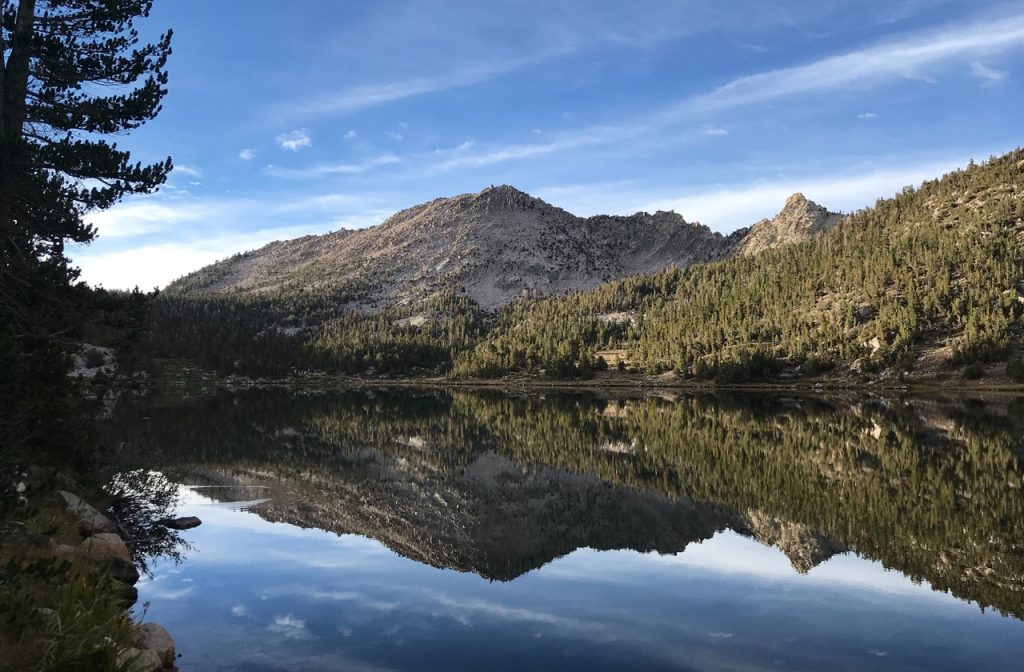
Photo by Joe Wilson on Pixabay
Kings Canyon National Park is one of the California national parks that run along the Sierra Nevada Mountains along with Sequoia National Park. Because of its glacial valleys and granite walls, Kings Canyon is somewhat a smaller version of Yosemite National Park. In addition, it shares the same admission with Sequoia National Park so you can visit two parks for one fee.
After or before seeing the massive sequoia trees at Sequoia National Park, head to Kings Canyon and enjoy different outdoor activities. Drive along the Kings Canyon Scenic Byway and marvel at the towering peaks before you. In winter, go cross-country skiing at General Grant Grove. General Grant Grove also houses the world’s third-largest tree, the General Grant. Do take note that reservation is needed for camping and lodging for visitors planning to stay overnight.
Entrance fees: 20 to 35 USD (depending on vehicle type)
7. Pinnacles National Park
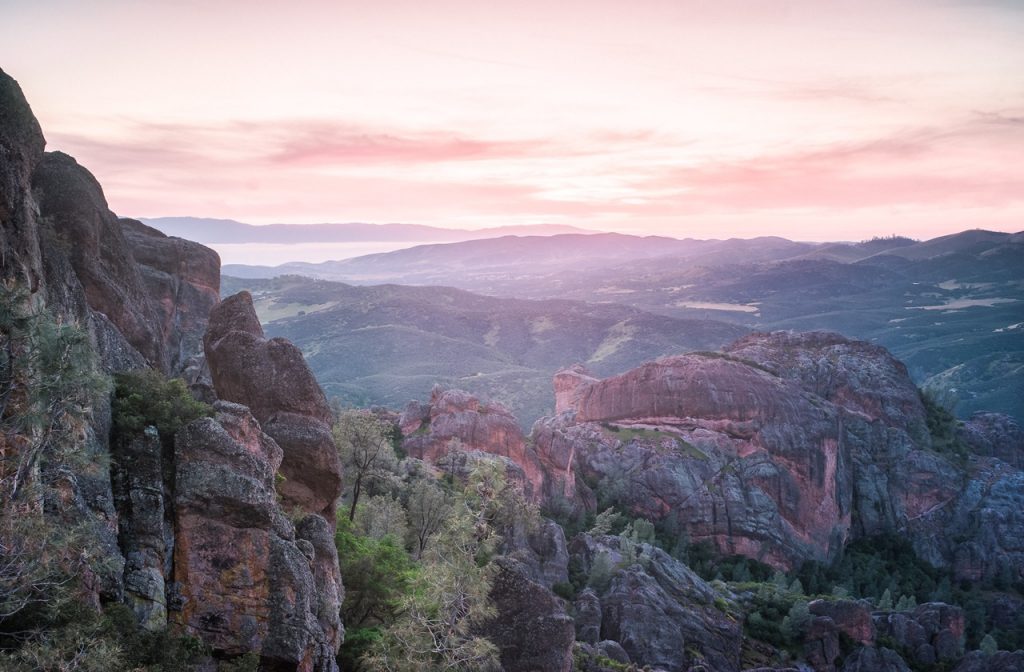
Photo by Stanislav Sedov on Flickr
Pinnacles National Park is one of the newer national parks in California, established only in 2013. It features unique yet interesting rock formations formed from the erosion of an extinct volcano and cliffs. The park is divided into two areas, namely the East and West Divisions. While the East Division has plenty of water and shade, the West Division on the other hand has most of the park’s high walls and rock formations. Originally a national monument, the park was established as a national park in 2013 for its diverse wildlife and environment.
Although Pinnacles National Park is lesser-known as compared to other national parks, this is a great park for those who prefer off-the-beaten-path hiking trails. Get an up-close look at the rock formations and go rock climbing. For wildlife enthusiasts, get a chance to see soaring falcons, eagles, owls, and the critically endangered California condor. If you want to get the park’s best views while skipping the strenuous hiking trails, head to the Peaks View lookout and marvel at the mountain views.
Entrance fees: 15 to 30 USD (depending on vehicle type)
8. Lassen Volcanic National Park
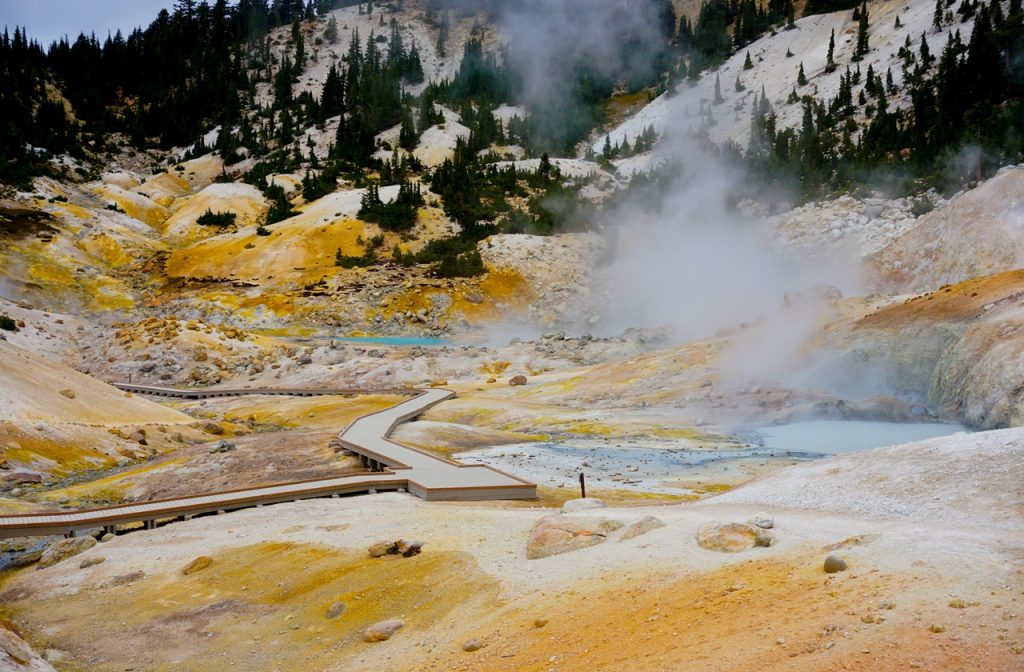
Photo by Quentin Burgess on Unsplash
Lassen Volcanic National Park may be one of the least-visited California national parks, but that doesn’t mean that it’s not worth visiting! The park offers a dynamic environment filled with mud springs, geysers, and hydrothermal features like those in Yellowstone National Park. It was established as a national park to preserve the land devastated by the eruption of Lassen Peak for further research and observation.
Today, Lassen Volcanic National Park is visible proof of the Earth’s tumultuous past: hardened lava, lava beds, and hydrothermal areas are scattered around the park. But despite all that, the park is teeming with abundant flora and fauna. One can only imagine the number of activities you can enjoy at Lassen Volcanic National Park because of its environment. Admire the wildflowers dotting the meadows, see the Bumpass Hell, a large hydrothermal area, and the fascinating sulfur works. For the best and most relaxing views of the park, head to Lake Helen.
Entrance fees: 10 to 30 USD (depending on vehicle type and season)
9. Channel Islands National Park
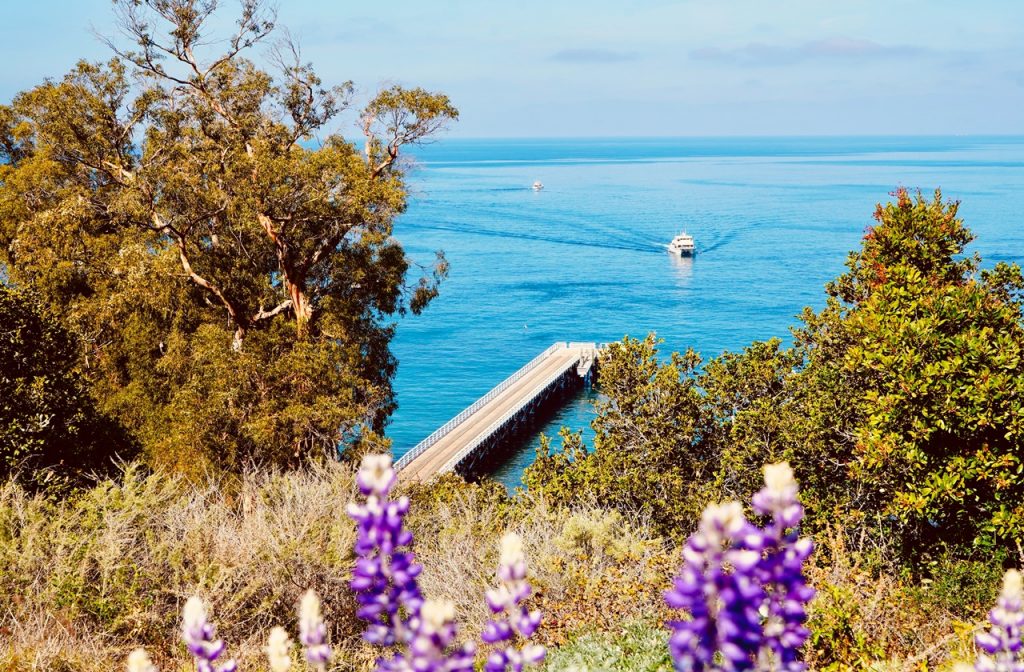
Photo by Priya Karkare on Unsplash
Take a break from the desert-like landscapes of some national parks in California and head to the seaside cliffs of Channel Islands National Park. It is made up of five islands (Santa Cruz, San Miguel, Santa Rosa, Anacapa, and Santa Barbara) scattered along the Santa Barbara Coast. Home to more than 2,000 plant and animal species, locals often call the national park the “Galapagos of America”. It is also a relatively secluded park, perfect for travelers who want to get away from the crowded hiking trails and campsites.
But despite its location, Channel Islands National Park has plenty of activities in store. Discover its rich marine life on a snorkeling or diving trip and enjoy the coastal breeze as you kayak across its waters. On land, hike along the cliffside, spot different wildlife, or spend the night under the stars at the campgrounds. Take note that Channel Islands National Park has no equipment rentals and stores. Thus, it’s important to plan everything before visiting the park.
Entrance fees: There are no entrance fees required to enter Channel Islands National Park.
10. Mojave National Preserve
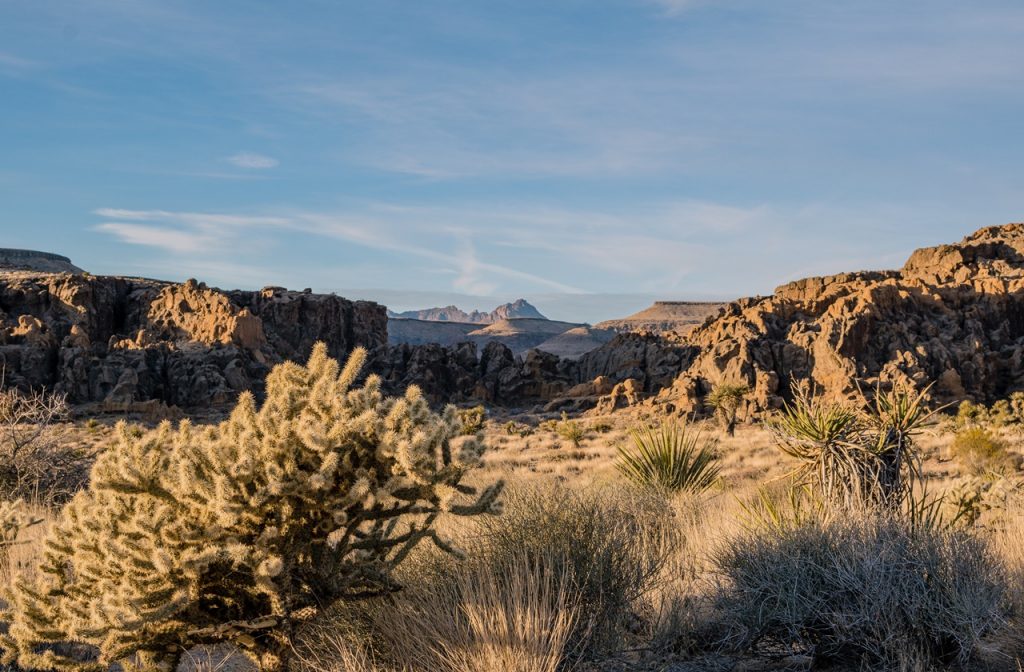
Photo by Ian M Jones on Unsplash
Covering more than 1.5 million acres of land, Mojave National Preserve size is comparable to some national parks in California. Located in Southern California, it is often overlooked by some tourists who opt to visit Joshua Tree National Park instead. However, the national preserve is still worth visiting. It offers volcanic formations, dunes, limestone caves, and Joshua trees scattered around its barren landscape. The preserve also contains several culturally and historically important features.
Start your trip by getting an overview of the park and its history at the visitor’s center. Then, embark on an adventure and discover the interesting and beautiful sights of Mojave National Preserve. There are the “singing” dunes at Kelso Dunes, the eerie-looking volcanic formations at Hole-in-the-Wall, and the largest Joshua tree forest in the world.
Entrance fees: There are no entrance fees required to enter Mojave National Preserve.
11. Golden Gate National Recreation Area
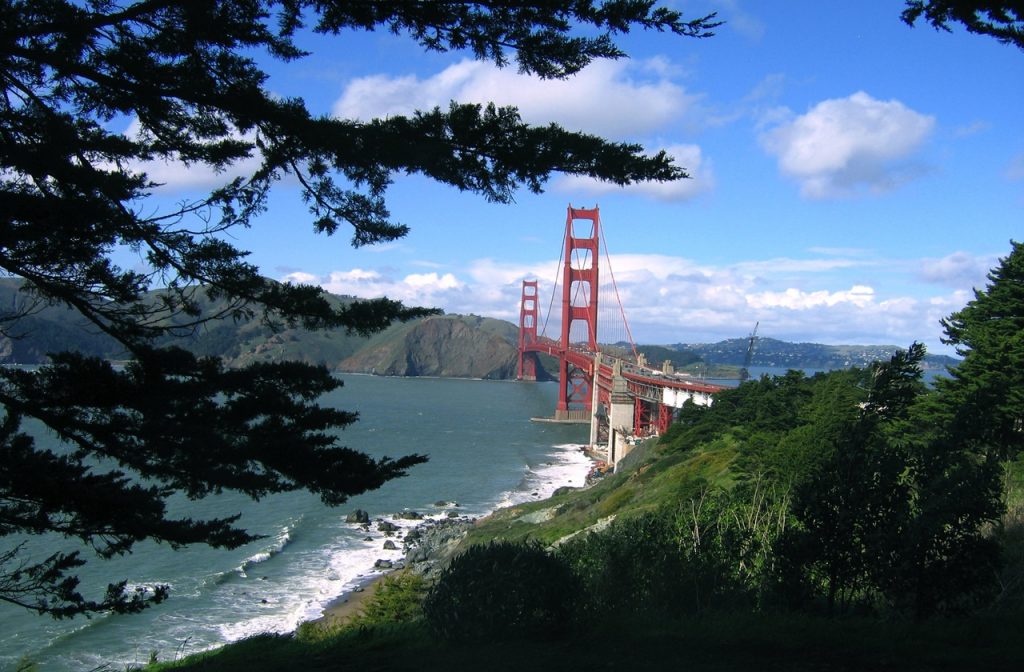
Photo by Dawn Endico on Flickr
The Golden Gate National Recreation Area combines both man-made and natural landmarks around the San Francisco Bay Area. Unlike most California national parks that are concentrated in the same region, this recreation area is actually a collection of different locales. Because of that, the park’s environment is diverse, ranging from towering redwoods to beautiful white-sand beaches.
If you’re staying around the Bay Area, there are a lot of things to do in the Golden Gate National Recreation Area. Visit the Muir Woods National Monument and see huge Coast Redwood, Coast Douglas-fir, Tanbark Oak, and other huge trees. Explore the lighthouse, citadel, and other historical sites at Alcatraz Island. Popular with pet owners, bring your dogs to places like Muir Beach, Rodeo Beach, and Crissy Field.
Entrance fees: Free for holders of the U.S. National Park Pass and National Parks Senior Pass. Take note that reservation is needed for Alcatraz Island and Muir Woods National Monument charges a 15 USD entrance fee for adults.
12. Santa Monica Mountains National Recreation Area
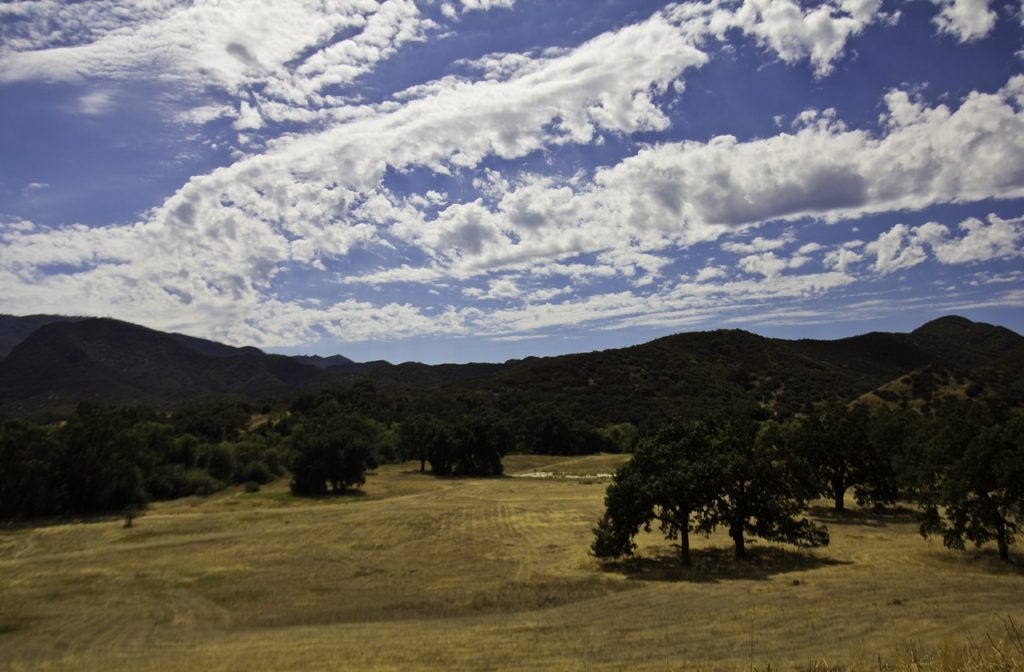
Photo by Santa Monica Mountains National Recreation Area on Flickr
Santa Monica Mountains National Recreation Area showcases some of the best Mediterranean ecosystems in the world. It also includes several state parks and beaches like El Pescador State Beach and El Matador State Beach, two of the most popular beaches in Malibu. The recreation area is also an hour away from Los Angeles, making it a perfect day trip for those wanting to escape the city’s busy streets.
From hiking, biking, camping, and swimming, enjoy a wide variety of outdoor activities at the Santa Monica Mountains National Recreation Area. Go on a scenic hike overlooking the beach at Point Mugu State Park or Topanga State Park if you’re looking for more challenging trails. Additionally, paddle across the blue waters of Leo Carrillo State Park or ride the waves at Malibu Surfrider Beach.
Entrance fees: There are no entrance fees required to enter Santa Monica Mountains National Recreation Area. However, camping in the park requires a charge.
13. Point Reyes National Seashore
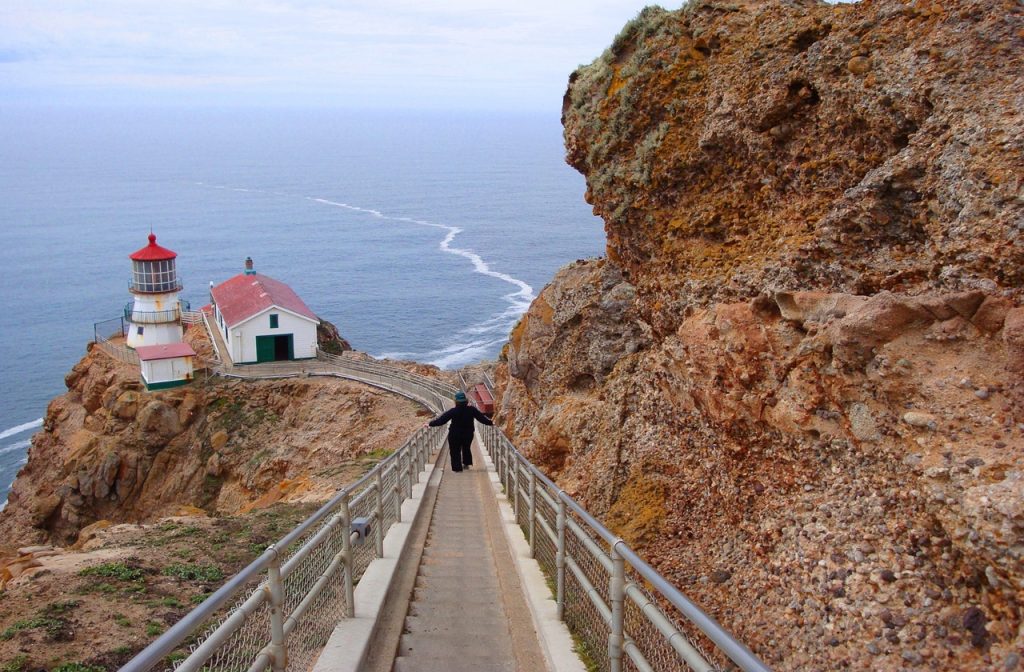
Photo by claraAlocato on Pixabay
Point Reyes National Seashore is the perfect seaside destination if you want to take a break from the lively boardwalks and promenades of California. This protected area features vast grasslands, seaside bluffs, and gorgeous beaches, all of which are the cleanest in the state. In addition, the flora and fauna here are remarkable, home to numerous tule elk, raptors, shorebirds, and elephant seals.
Take a day trip from San Francisco to Point Reyes National Seashore and soak up the seaside views. Join ranger-led programs to learn more about the history and significance of the area. Spot different animal species at wildlife viewing areas, go on scenic drives along the coast and go on leisurely hikes. While the area is famous for its clean beaches, swimming is dangerous on most beaches due to rip currents and undertow. For the best views of Point Reyes, head to Point Reyes Lighthouse and Chimney Rock.
Entrance fees: There are no entrance fees required to enter Point Reyes National Seashore. However, camping in the park requires a charge.
14. John Muir National Historic Site

Photo by Ken Lund on Flickr
John Muir was a Scottish-American environmentalist and writer who advocated for the preservation of wilderness sites in the country. Without him, national parks in California like Yosemite National Park, Sequoia National Park, and others wouldn’t have existed. Because of his influence in establishing the National Park Service, his mansion became a national historic site in 1964.
Learn more about John Muir’s life as you explore the 14-room Italianate-Victorian mansion. Additionally, watch the biographical film to get an overview of his contributions to the conversation of wilderness. Outside, explore Mount Wanda, named after his daughter, and walk along the nature trails. At the mountain summit, enjoy a relaxing picnic overlooking lush forests and meadows.
Entrance fees: There are no entrance fees required to enter John Muir National Historic Site.
15. Devils Postpile National Monument
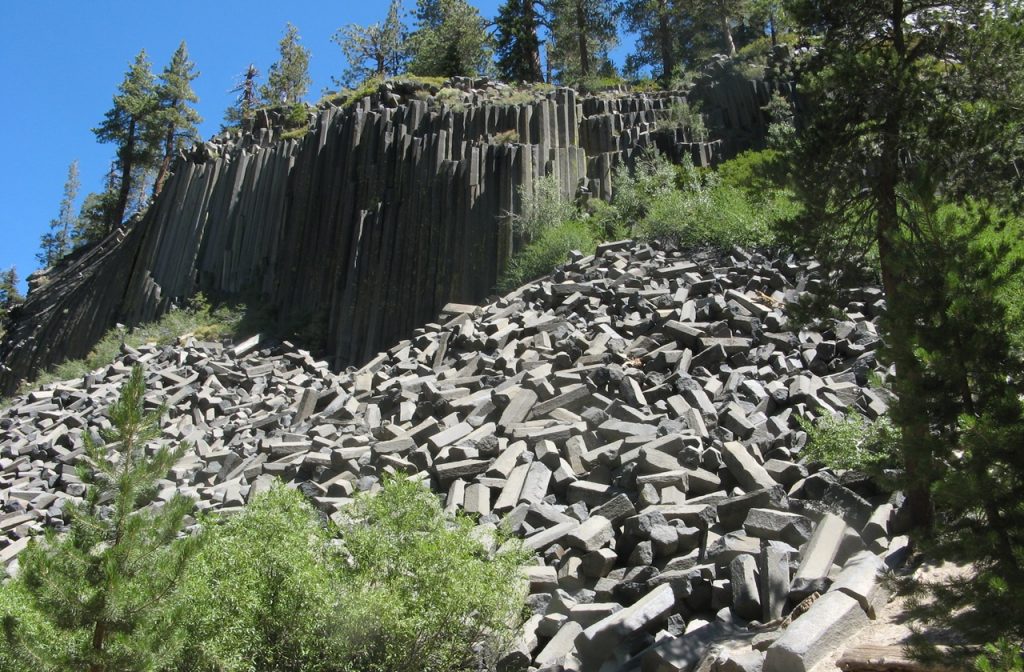
Photo by Silver Tusk on Flickr
Devils Postpile National Monument may be one of the smaller national monuments in California, but it is still worth visiting. The site protects the Devils Postpile, a unique rock formation made from basalt similar to the Giant’s Causeway in Ireland. These rock formations originated from a volcanic eruption long ago and the lava streamed down the slope, leaving these fascinating basalt formations.
Explore Devils Postpile National Monument and follow different hiking trails surrounding the monument. Take note that the park is usually open from mid-June to mid-October due to the heavy snowfall in winter.
Entrance fees: 15 USD for adults, 7 USD for children 3 to 15 years old, free for children 2 years old and under
Discover the Most Beautiful National Parks in California
Visiting national parks is the best way to spend time in California. They also give you a glimpse into its history and highlight its best natural features. Find various historical and natural sites and get a chance to see some rare and endangered animals on your way. Best of all, some national monuments and national parks in California offer free entrance for holders of the National Parks and Federal Recreational Lands Pass.
On your next visit to California, visit one of the national parks listed above and have an unforgettable adventure!

